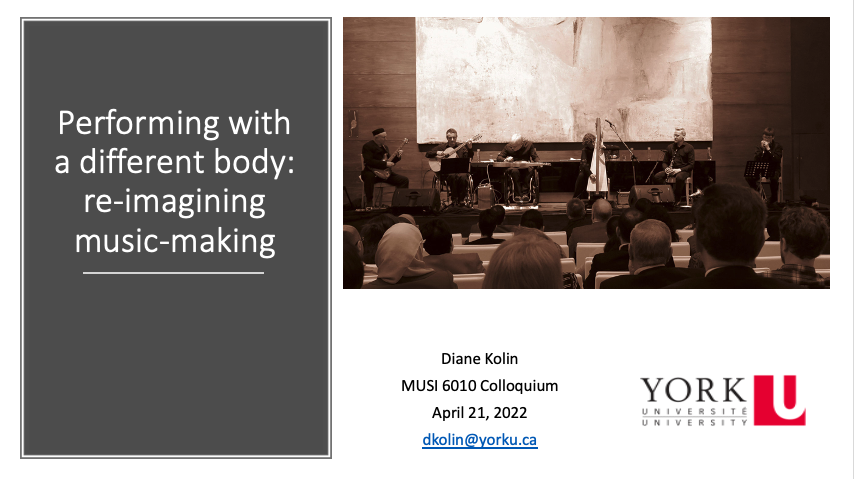Paper presented at York University, Toronto, on April 21st, 2022, during the MUSI 6010 PhD Colloquium. It was presented live and has not been recorded. The abstract below gives you an idea of the content.

Abstract:
How does someone without arms play French Horn? How does someone with bent arms play violin? How do musicians with differently developed bodies make music? Like all musicians, they need a team of supporters. Their teams, however, also include instrument inventors and builders. In this paper, I explore the experience of three professional musicians who I have interviewed about their musical journeys, born without arms, with a different shape of body, or with a progressing disability.
Following Blake Howe’s study of the one-handed pianist Paul Wittgenstein (2010), I use social and cultural models of disability and mediation theory as a framework to examine the relationship between music-making, differently shaped or functioning bodies, and disability, leading the musicians to new instruments and practices. The concept of separation between disability and impairment emerged from the social model of disability (Barnes, 2012), from which the cultural model borrows its approach of disability pride (Mitchell & Snyder, 2012). Although disability pride has been adopted by musicians who consider that disability is part of their identity and should not be seen in negative ways assumed by our current society, the three musicians are differently affected by disability pride. I discuss how their disability led them to different directions, whether they consider it as the motor of their actions or as a simple fact that has little to do with their musicianship. I use mediation theory (Prior, 2018) to discuss how new technology can reshape the conventional form of instruments. Based on the experience of these three musicians, I suggest that unconventional thinking and re-imagination of the confines of traditional music-making can open the profession of music to all, no matter what kind of bodies we are born with, and allow more inclusive musical performance practices.
Keywords: Disability, adaptations, inclusivity.
